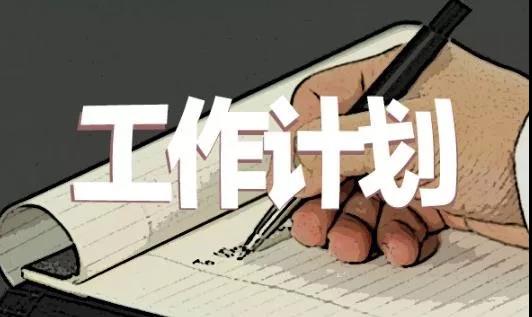Yuan Feng,Nan Wu
Key Laboratory of Carcinogenesis and Translational Research (Ministry of Education/Beijing),Department of Thoracic Surgery II,Peking University Cancer Hospital &Institute,Beijing 100142,China
Esophageal cancer has always been one of the most common malignant tumors in the world,and China is one of the regions with the highest incidence.Although the incidence and mortality of esophageal cancer in China have shown a downward trend in recent years,according to the statistics of the prevalence of malignant tumor in China in 2015,its morbidity and mortality rate still rank 6th and 4th among all malignant tumors,respectively.
Unlike in Europe and the United States where adenocarcinoma is common,more than 90% of esophageal cancers in China are squamous cell carcinomas.Therefore,although National Comprehensive Cancer Network(NCCN) guidelines have been widely used in clinical practice in China,it is obviously not appropriate to completely copy the NCCN guidelines specified based on European and American clinical trials and treatment experience for Chinese patients with esophageal cancer.In view of this,the Chinese Society of Esophageal Cancer,Chinese Anti-Cancer Association released the first edition of Chinese Guidelines for Diagnosis and Treatment of Esophageal Carcinoma in April 2011,which is different from the NCCN guidelines,and continued to update them in the following years.The past editions of these guidelines witnessed the unremitting efforts of Chinese scholars and progress on diagnosis and treatment of esophageal cancer in China,and have established a standard esophageal cancer treatment plan for Chinese patients.
TheNational Guidelines of Diagnosis and Treatment of Esophageal Cancer 2022 in China(1) was updated and released by the National Health Commission of the People’s Republic of China based on the 2018 edition.Besides inheriting the main model of the previous version,it has been updated based on the progress of diagnosis and treatment in recent years.Some of the content has been rewritten,making the new guidelines more focused,concise and practical.
First,the new guidelines further affirmed the role of endoscopic and minimally invasive techniques in early esophageal cancer screening and treatment,while streamlining the technical details of endoscopic mucosal resection (EMR) and endoscopic submucosal dissection(ESD),making the guidelines act more as treatment model providers but not technique textbook.
In terms of lymph node grouping,the previous version introduced the Chinese standards released in 2017,while in the new version of the guidelines,the grouping standards of the American Joint Committee on Cancer/Union for International Cancer Control (AJCC/UICC) and Japan Esophageal Society (JES) are highlighted in detail.Among them,JES grouping standards have a wide application base in China.Considering the inconsistency of the criteria for grouping lymph nodes of esophageal cancer at different times and in different regions,it may be more helpful to avoid confusion caused by this inconsistency by recording the specific anatomical location of the lymph nodes to be dissected during surgery while leaving the grouping work for research.
Concerning neoadjuvant therapy,radiotherapy,chemotherapy,and concurrent chemoradiotherapy are all recognized as acceptable regimens in the new guidelines.This is specified in consideration of the uneven distribution of medical resources in China and the different understanding and acceptance of esophageal cancer treatment options by patients.Recommendation of chemoradiation as the only neoadjuvant regimen may result in patients rejecting all preoperative treatments and missing out on the potential benefits of relatively mild neoadjuvant chemotherapy or radiotherapy.
In addition to the above-mentioned aspects,the past few years have also been a period of breakthrough progress in new immunotherapies represented by immune checkpoint inhibitors.The Checkmate 577 clinical trial,published in 2021,verified the benefit of nivolumab as an adjuvant therapy for resectable esophageal cancer.This result was adopted by the NCCN guidelines and recognized by the 2022 edition of theNational Guidelines of Diagnosis and Treatment of Esophageal Cancer.However,unlike NCCN guidelines,postoperative adjuvant chemotherapy or chemoradiotherapy is also to be considered appropriate in the new guidelines for patients with high-risk factors (T4a and N1-3) for Chinese patients.For the controversy of postoperative adjuvant therapy,randomized clinical studies are still needed.
On the other hand,immunotherapy is not currently recommended by the guidelines as an option for neoadjuvant therapy.However,the possible exciting results of the ongoing international and domestic clinical trials may modify the future guidelines in this regard.
In general,despite the difficulties in the treatment of esophageal cancer,clinicians and researchers have been committed to improving patient survival and quality of life.While the progress in the diagnosis and treatment of esophageal cancer in recent years is gratifying,the new version of the guidelines once again presents the determination and efforts of Chinese scholars in overcoming the difficulties of esophageal cancer.It is expected that our work will contribute to overcoming malignant tumors and finally benefit patients and families suffering from the disease.
None.
Conflicts of Interest: The authors have no conflicts of interest to declare.
推荐访问:diagnosis treatment guidelines



